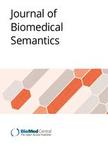版权所有:内蒙古大学图书馆 技术提供:维普资讯• 智图
内蒙古自治区呼和浩特市赛罕区大学西街235号 邮编: 010021

作者机构:Aberystwyth University Department of Computer Science Penglais Wales United Kingdom The University of Chicago Department of Medicine and Department of Human Genetics United States
出 版 物:《Journal of Biomedical Semantics》 (J. Biomed. Semant.)
年 卷 期:2011年第2卷第2期
页 面:1-15页
基 金:Biotechnology and Biological Sciences Research Council BBSRC
主 题:Research Hypothesis Textual Representation Inductive Logic Programming Hypothesis Formation Class Labor
摘 要:Background: Hypotheses are now being automatically produced on an industrial scale by computers in biology, e.g. the annotation of a genome is essentially a large set of hypotheses generated by sequence similarity programs;and robot scientists enable the full automation of a scientific investigation, including generation and testing of research hypotheses. Results: This paper proposes a logically defined way for recording automatically generated hypotheses in machine amenable way. The proposed formalism allows the description of complete hypotheses sets as specified input and output for scientific investigations. The formalism supports the decomposition of research hypotheses into more specialised hypotheses if that is required by an application. Hypotheses are represented in an operational way - it is possible to design an experiment to test them. The explicit formal description of research hypotheses promotes the explicit formal description of the results and conclusions of an investigation. The paper also proposes a framework for automated hypotheses generation. We demonstrate how the key components of the proposed framework are implemented in the Robot Scientist Adam. Conclusions: A formal representation of automatically generated research hypotheses can help to improve the way humans produce, record, and validate research hypotheses. Availability:http://***/en/cs/research/cb/projects/robotscientist/results/ © 2011 Soldatova et al;licensee BioMed Central Ltd.